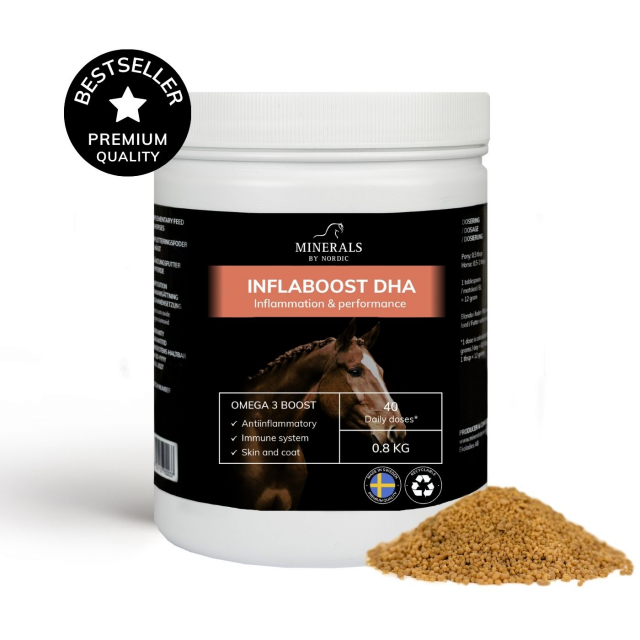
Shedding season - Everything you need to know
Shedding is a natural process for horses, which usually occurs twice a year: in the spring and autumn. This process can be demanding for the horse and requires extra attention and care from the horse owner. By understanding how to best support your horse during these periods, you can not only promote the horse's well-being but also improve coat quality and overall health.
Horses work year-round with their coat. The growth and shedding of the coat is a continuous process that adapts to the seasons and changing climatic conditions to protect the horse. In spring, the horse begins to shed its thick winter coat to make room for a thinner summer coat, which helps them stay cool during the warmer months. As the days get shorter and temperatures drop in the autumn and winter, the horse gradually develops a thicker coat again to insulate the body and retain heat during the colder months. This natural cycle means that the horse's body continuously works to adjust its coat according to the prevailing conditions to maintain optimal temperature regulation and comfort.
How can you support the horse's shedding process?
Effective coat care and grooming:
Regular grooming is essential during the shedding period. It not only helps remove loose hair but also stimulates blood circulation and promotes new, healthy coat growth. Use a range of brushes and combs to effectively remove dead hair and distribute the skin's natural oils through the coat.
Applying appropriate blankets:
Depending on weather conditions and the horse's individual needs, the use of horse blankets can be beneficial during the shedding period. An appropriate blanket can help regulate the horse's body temperature and protect against weather conditions, which in turn can facilitate even and healthy shedding.
Monitor health closely:
During the shedding period, it is important to closely monitor the horse's health. Any signs of skin irritations, unusual hair loss, or other health problems should be promptly addressed with a veterinarian. The horse may become sensitive in the skin, and its mood can be affected.
Are B Vitamin Supplements Needed During Shedding?
Under normal conditions, the microbes in the horse's gut produce enough B vitamins to meet the horse's needs. However, the horse can suffer from a B vitamin deficiency if there is a disruption in the gastrointestinal tract. Algae meal found in Activ Mineral contains B1, B2, B3, B7, B9, B12, vitamin C, and vitamin E. There is no scientific documentation that B vitamin supplements are needed during shedding. It is known that horses can naturally produce some B vitamins through the microflora in the large intestine, but stress, intense training, or dietary changes can affect this production and create an increased need for B vitamins from the diet. For a well-functioning gut with well-balanced mineral levels, the horse produces enough B vitamins on its own.
Optimal nutrition for healthy shedding
A well-balanced diet year-round is essential to support the horse through the coat metabolism that occurs year-round. Feed rich in essential fatty acids, such as omega-3, promotes healthy skin and coat. Omega-3 can be found in supplements like Inflaboost DHA or wheat germ oil. Supplements containing biotin, zinc, and copper can also help strengthen the condition of the coat and skin.
Proteins and amino acids are the building blocks of the coat, and an adequate supply of these nutrients is crucial to support the healthy growth of new hair and maintain skin quality. The amino acids methionine and lysine are particularly important as they are often limiting in the horse's diet and play a critical role in the production of keratin, the protein that makes up the coat, skin, and hooves.
Minerals, amino acids, and proteins can be found in Activ Mineral, which is recommended to be fed year-round. If you notice that your horse seems sensitive in the skin and muscles, you can try adding Mg Control for magnesium, which can help the hair follicles and muscles relax.

 SWE
SWE



 ENG
ENG NO
NO AX
AX DE
DE